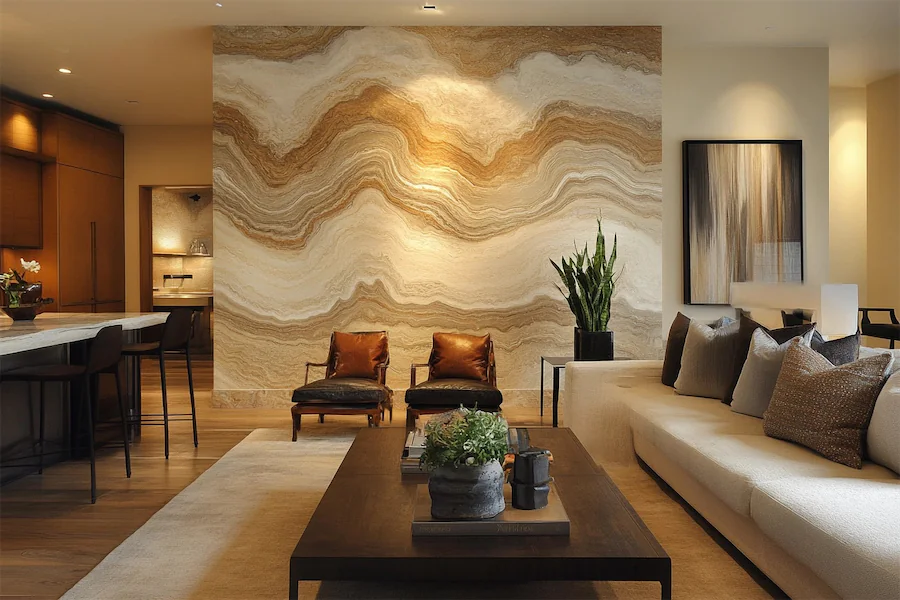Transitional interior design harmoniously blends traditional and contemporary elements, creating spaces that are both timeless and fresh. Walls play a pivotal role in establishing this balance, serving as canvases that reflect the style’s nuanced fusion.
Key Features of Transitional Walls
- Neutral Color Palette: Walls are typically adorned in soft, neutral tones such as whites, creams, and grays. This subtle backdrop allows for flexibility in decor and emphasizes the room’s furnishings and textures.
- Subtle Textures and Patterns: Incorporating understated textures or patterns, like light wallpaper designs or fabric wall coverings, adds depth without overwhelming the space. These elements contribute to a sophisticated yet comfortable ambiance.
- Balanced Architectural Details: Features such as crown molding or wainscoting are often simplified to maintain a clean and uncluttered look, bridging the gap between ornate traditional and stark modern designs.
Applications of Transitional Wall Designs
- Living Rooms: Applying a neutral base color on the walls and incorporating subtle textures can create an inviting atmosphere. Adding simplified traditional elements, like crown molding, enhances the transitional feel.
- Bedrooms: Soft, neutral-colored walls provide a serene backdrop, while minimalistic wainscoting adds character without dominating the space. This approach fosters a restful and elegant environment.
- Kitchens: Utilizing neutral tones on walls paired with streamlined cabinetry and subtle decorative elements can create a cohesive and balanced kitchen space. Incorporating materials like glass or brushed metal for backsplashes adds a contemporary touch.
Considerations When Choosing Transitional Wall Designs
- Consistency: Maintaining a cohesive color palette and design elements throughout the space ensures harmony and flow, which are essential in transitional design.
- Quality Materials: Investing in high-quality paints and finishes enhances the longevity and appearance of the walls, contributing to the overall elegance of the space.
- Personalization: Incorporating personal touches, such as artwork or decorative items that reflect individual taste, can make the space feel uniquely yours while adhering to transitional principles.
Conclusion
Transitional wall designs offer a versatile foundation that seamlessly merges traditional charm with contemporary simplicity. By focusing on neutral palettes, subtle textures, and balanced architectural details, you can create spaces that are both sophisticated and inviting.
